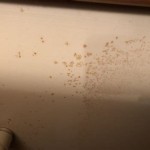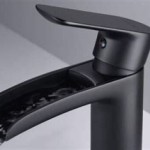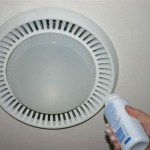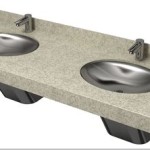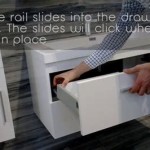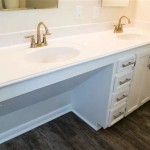RV Bathroom Sink Leaking: Diagnosis and Repair
A leaking bathroom sink in a recreational vehicle (RV) can quickly escalate from a minor inconvenience to a significant problem. Untreated leaks can lead to water damage, fostering mold growth, weakening structural components, and ultimately diminishing the overall value and usability of the RV. This article provides a detailed guide to diagnosing the common causes of RV bathroom sink leaks and outlines the steps required to address them effectively.
The confined space and unique plumbing configurations found in RVs often complicate leak detection and repair. Unlike residential plumbing, RV systems are designed to be lightweight and compact, using materials that may be more susceptible to damage from vibrations, temperature fluctuations, and frequent travel. Therefore, a systematic approach to identifying the source of the leak is crucial before attempting any repairs.
Identifying the Source of the Leak
The first step in addressing a leaking RV bathroom sink is to pinpoint the exact location of the leak. This requires a thorough visual inspection, often aided by a flashlight to access dimly lit areas under the sink. Start by drying the area under the sink with a towel to make it easier to spot new drips. Observe the plumbing while the water is running to identify where the leak originates.
Begin the inspection at the faucet itself. Check the base of the faucet where it meets the sink basin. Look for signs of water seepage around the mounting hardware. Turn the faucet on and off, observing if the leak is present only during operation or if it is continuous. Next, examine the faucet handles and spout for any cracks or loose connections. A leaking faucet stem or cartridge can cause water to run down the outside of the faucet and appear to be coming from elsewhere.
The drain assembly is another common source of leaks. This includes the sink strainer, drain flange, tailpiece, and P-trap. Carefully inspect each connection point for signs of water leakage. Run water into the sink and observe the drain assembly as it empties. Check the P-trap for cracks or loose fittings. The P-trap is designed to hold water, preventing sewer gasses from entering the RV, but it can also become a point of failure if it is damaged or improperly installed.
Supply lines connect the faucet to the RV’s water system. These lines are typically made of flexible plastic or braided stainless steel. Inspect the connections at both the faucet and the water supply valves. Look for signs of corrosion or water stains around the fittings. Even a small pinhole leak in a supply line can cause a significant amount of water damage over time. Check the entire length of the supply lines for any kinks, cracks, or damage.
The sink basin itself can also be a source of leaks, although this is less common. Inspect the basin for cracks, chips, or signs of damage, particularly around the drain opening. If the sink is made of a composite material, look for signs of delamination or separation. If the sink is cracked, it will need to be repaired or replaced.
The countertop and surrounding areas should also be examined. Water can travel along surfaces, making it appear as though the leak is originating from a different location. Wipe down the countertop around the sink and monitor for any signs of water seepage. Check the seams between the countertop and the wall or backsplash for any gaps or cracks that could allow water to penetrate.
Common Causes of RV Bathroom Sink Leaks
Once the source of the leak has been identified, understanding the underlying cause is essential for implementing an effective repair. Several common issues can lead to leaks in RV bathroom sinks.
Loose connections are a frequent culprit. The constant vibrations and movement associated with RV travel can cause fittings to loosen over time. This is particularly true for compression fittings, which rely on a tight seal to prevent leaks. Check all connections and tighten them as needed, being careful not to overtighten and damage the fitting or the pipe. Teflon tape or pipe dope can be used on threaded connections to ensure a watertight seal.
Worn or damaged seals and washers are another common cause of leaks. Faucets and drain assemblies rely on rubber or silicone seals to prevent water from escaping. Over time, these seals can dry out, crack, or become deformed, leading to leaks. Replacing worn seals and washers is a relatively simple and inexpensive repair that can often resolve the issue. When replacing seals, be sure to use the correct size and type for the specific faucet or drain assembly.
Corrosion can also contribute to leaks. Corrosion is the result of a chemical reaction between metal and its environment, often caused by water and minerals. Over time, corrosion can weaken metal pipes and fittings, leading to leaks. Inspect the plumbing for signs of corrosion, such as rust or discoloration. If corrosion is present, the affected components may need to be replaced.
Cracked or damaged pipes are another potential cause of leaks. Pipes can crack due to age, freezing temperatures, or physical damage. Inspect the pipes for any visible cracks or signs of damage. If a pipe is cracked, it will need to be repaired or replaced. Temporary repairs can be made using pipe repair tape or clamps, but a permanent solution is usually necessary.
Improper installation is also a common factor. If the sink or plumbing was not installed correctly in the first place, it is more likely to leak. Check for any obvious installation errors, such as misaligned pipes or improperly tightened fittings. If you are not comfortable correcting the installation yourself, it is best to consult with a qualified RV technician.
Repairing the Leak
Once the source and cause of the leak have been identified, the repair process can begin. The specific steps required will depend on the nature of the leak and the components involved. However, some general principles apply to most RV bathroom sink leak repairs.
Before starting any repair, it is essential to shut off the water supply to the sink. This can be done by closing the shut-off valves located under the sink or by turning off the main water supply to the RV. Once the water is shut off, open the faucet to relieve any pressure in the lines. Place a bucket or towels under the sink to catch any remaining water.
For loose connections, simply tightening the fittings may be sufficient to stop the leak. Use a wrench to tighten the connections, being careful not to overtighten and damage the fitting. If the connection is corroded, it may be necessary to clean the threads with a wire brush before tightening. Applying Teflon tape or pipe dope to the threads can help create a watertight seal.
Replacing worn or damaged seals and washers is a relatively straightforward repair. Disassemble the faucet or drain assembly to access the seals. Remove the old seals and clean the surrounding area. Install the new seals, ensuring that they are properly seated. Reassemble the faucet or drain assembly and test for leaks.
Repairing cracked or damaged pipes may require more extensive work. Small cracks can sometimes be repaired using pipe repair tape or clamps. However, for larger cracks or significant damage, it is usually necessary to replace the entire pipe section. Cut out the damaged section of pipe and replace it with a new section of the same material and diameter. Use appropriate fittings and connectors to join the new section to the existing pipe. Be sure to properly seal all connections to prevent leaks.
If the sink basin itself is cracked, it may be possible to repair it using epoxy or other patching materials. Clean the cracked area thoroughly and apply the patching material according to the manufacturer's instructions. Allow the patching material to cure completely before using the sink. For larger cracks or significant damage, it may be necessary to replace the entire sink basin.
After completing the repair, turn the water supply back on and check for leaks. Monitor the repaired area closely for several days to ensure that the leak has been completely resolved. If any leaks persist, reexamine the connections and seals and make any necessary adjustments.
In cases where the leak is complex or the repair requires specialized tools or knowledge, it is best to consult with a qualified RV technician. Attempting to repair a leak without the proper skills or equipment can potentially cause further damage and increase the overall cost of the repair. A professional technician can diagnose the problem accurately and perform the necessary repairs safely and effectively.

Rv Camper Bathroom Water Leaks

Rv Bathroom Faucet Replacement John Marucci On The Road

Rv Bathroom Faucet Leak Solution

Rv Bathroom Faucet Leak Solution

Rv Bathroom Sink Replacement
Water Leaking Under Bathroom Sink Cabinet Irv2 Forums

How Not To Replace An Rv Bathroom Faucet

Bad Smell Coming From Under The Rv Sink
Water Leak Under Bathroom Sink Forest River Forums

Faucet Leaking At Base Of Spout Irv2 Forums
Related Posts


